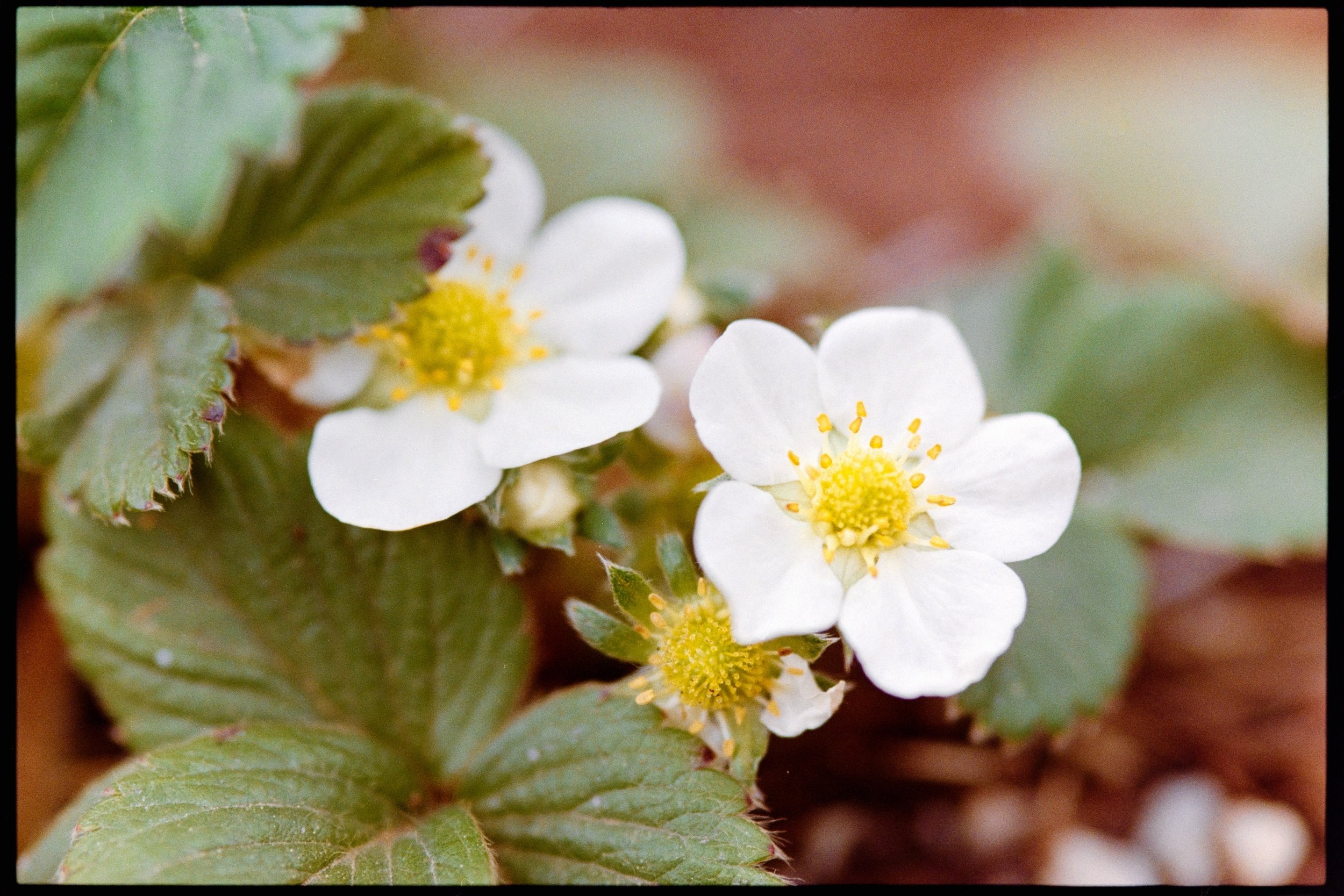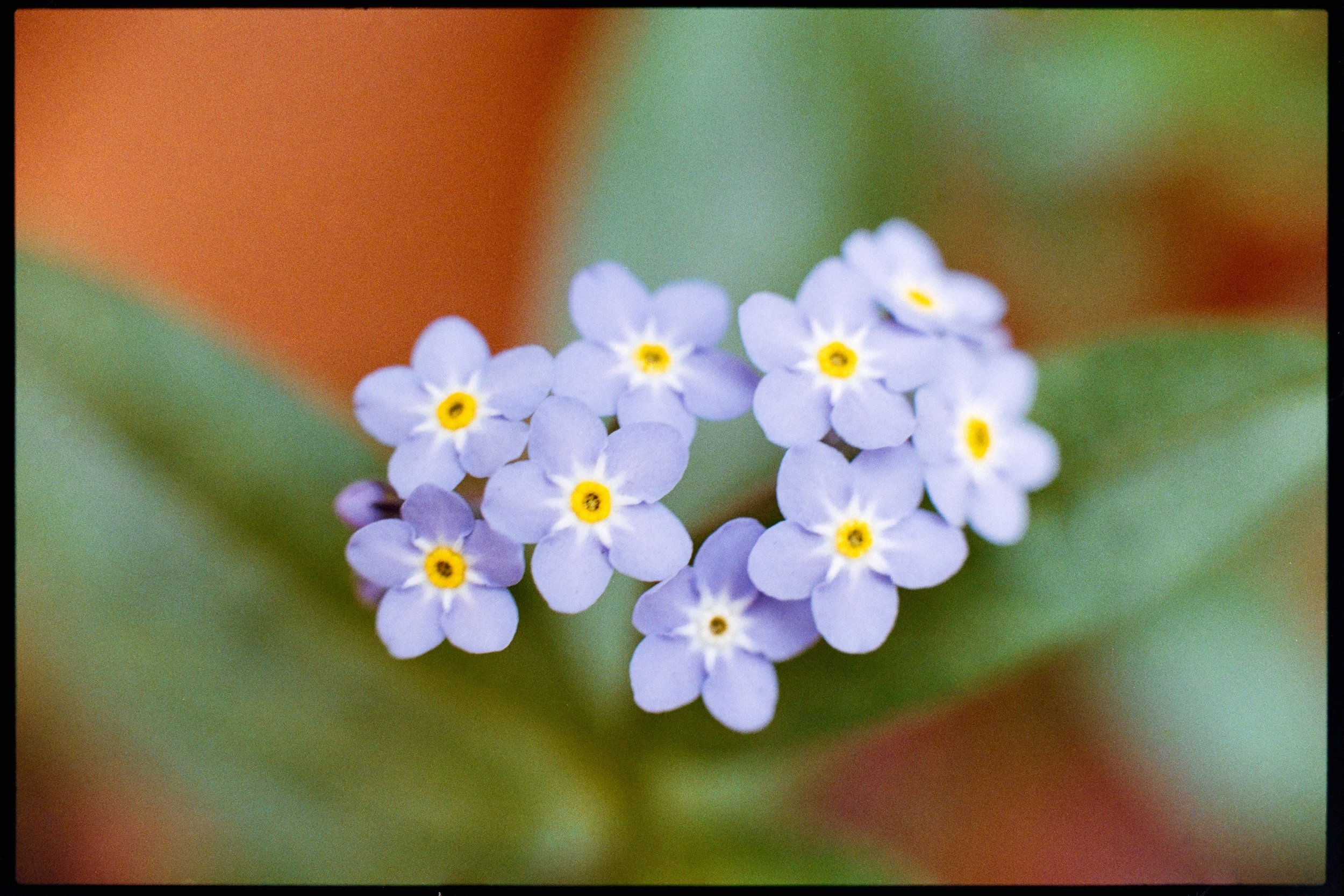Analog Macro Photography
Nikon FM2 and Micro-Nikkor 105mm f2.8 on Lomography Color Negative 100
As a long-time macro photographer, I have a lot of bigger and smaller accessories lying around - all kinds of tripos, macro lenses, of course, reverse lens adapters, flashes, you name it.
Funnily enough, when I got back into film photography about two years ago, it didn’t cross my mind to try macrophotography on film for a while. Only a couple of weeks ago, I decided to give it a try and loaded a roll of Kodak Gold 200 into my Canon EOS 300V. I had chosen this camera, because I have two really good macro lenses for the EF mount - the Canon 100 mm Macro f2.8L and the equally brilliant Laowa 100 mm f2.8 CA Dreamer. I chose the Canon for its autofocus and joined my wife on our roof terrace. And before I noticed, I had burnt through the whole roll.
Now, as a digital macro photographer, I am used to shoot hundreds of exposures in a matter of hours, especially if I decide a certain motif merits a proper focus stack. And one stack can be somewhere between 20 and 200 pictures, depending on the subject. So, 36 exposures were, like, not really much.
Of course, when shooting macro on film, focus stacks are an afterthought and probably not worth bothering. What I found, however, was that I not onyl shot proper macros (like leaves or tiny flowers of an unknown herb growing in a pot) but also the typical leftovers of a terrace that was largely ignored during the winter months.
Since this first outing with a proper macro setup, I have tried and tested a number of other things that I found to be inexpensive ways into analog macro photography.
Extension Tubes
Shot with a Canon F-1n, Canon FDn 50mm f1.4 and an extension tube on Lomography Color Negative 100
Of course: Extension tubes. I admit, I hadn’t thought of them for many years. They were my way into macro photography in the first place, mainly because they were a lot less expensive than macro lenses and could be used with the standard lenses that came with the cameras - mostly some kind of 50mm lens.
In my case, I found a set of Kenko extension tubes on Ebay for 25 Euros and immediately grabbed them. Those Kenko tubes had a very good reputation back in the day, and they still work great.
Admittedly, the quality of a macro photography shot with a standard lens and an extension tube will never match the quality of a real macro lens, especially one of those modern beasts. But, in my view, the quality holds up pretty well, and since the tubes wheigh only very little, they can easily be carried along on photography outings.
One of the things about these extension tubes is that they are necessary if you want to go to larger magnification ratios with vintage macro (or, in Nikon’s world: micro) lenses. They usually end at 1:2 magnification, whereas modern macro lenses typically feature 1:1 or even 2:1 magnification without tubes.
Another extension tube macro - Forgetmenots shot with the Canon 50mm f1.4 plus tube.
Macro or close-up diopters
I have never been a big fan of closeup diopters (or close-up lenses) that can be screwed on the camera. Until some years ago I came across the Raynox adapters. I originally bought the DCR-250 diopter to add to my trusted Sony RX-100 with a magnetic adapter, but this never worked for me. So the Raynox led a lonely life on the bookshelf until recently. I dusted off the box it came in, took out the Raynox and snapped it onto the 50mm Planar on my Yashica FX-3. This snap-on adapter is great (and bad at the same time) as you can swap your normal setup to a macro setup with +8 diopters in front of your lens in seconds.
Now, the problem with this particular close-up adapter is that it usually works best with longer focal lengths (70mm to 135mm I believe is the official recommendation). On shorter lenses, it will produce quite a vignette. The 50mm Planar was sometimes producing vignettes, sometimes not, and I believe it has to do with the distance from the subject that you are focusing on. Through the camera viewfinder it wasn’t always visible.
There are other close-up lenses, but none is as versatile as this particular one. They are either optically worse, or super heavy, like the new Nisi, which is a heavy beast in its 77mm version, which probably wouldn’t produce any vignetting. There are similar others from Marubeni and other manufacturers. All of those are also more expensive than the Raynox, though.
Shot with the Micro-Nikkor 105mm f2.8 lens on Lomography Color Negative 100
Vintage macro lenses
Let’s not forget the available vintage macro lenses out there, which then might be combined with either extension tubes or close-up lense for greater magnification.
The two Micro-Nikkors that I have, the 55mm and the 105mm are both excellent lenses even if used on a modern digital camera. But there might be other options out there - like old Canon, Pentax, Zeiss or Minolta glass. My understanding is that Olympus also had some good glass that came with a helicoid extension tube, but they seemed to be relatively rare.
Some final thoughts
It is hard to describe the quality of the images I get when I shot macros on film. They have a quality that I don’t find it digital pictures, and that I probably wouldn’t accept in a digital image. The grain structure, the color (if shot in color). The selective sharpness is also part of the film allure - because you can’t just ramp up the ISO setting of your camera.
The images in this post are not comparable with the images I share in my portfolio. Those are all taken with digital cameras and modern lenses.
Of course, the analog macros are not perfect. And like people, I love them for their imperfections and how quirky they are. I will certainly continue loving them and shooting more analog macros. Alongside the digital ones.



